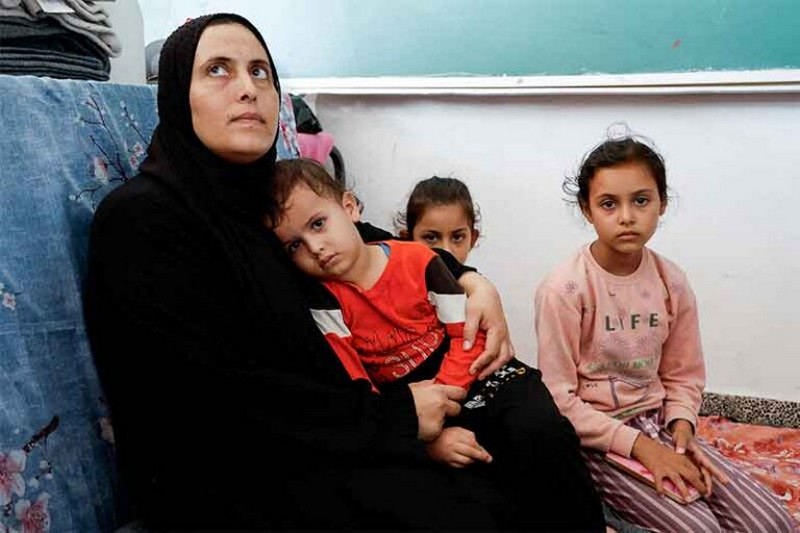By Dr Akhtar Ali Syed
In 2015, Leicester hosted a conference on the psychological effects of war on the people living in active war zones. An Iraqi psychiatrist presented his research on the incidence of post-traumatic stress disorder in various parts of Iraq, estimating that 50 to 70 percent of the general population suffered from the disorder.
Following him, a British specialist called his estimations ludicrous and inappropriate. The Iraqi and the British specialists were both right. The Iraqi psychiatrist reported on the clinical presentation of Iraqis who had been victims of the worst atrocities committed after the invasion. The British expert sitting thousands of miles away was speaking solely from the Diagnostic and Statistical Manual of Mental Disorders (popularly known as DSM).
The clinical picture of traumatised Iraqis did not fulfill the diagnostic criteria of PTSD described in the manual. This argument was made while post-invasion terrorism in Iraq was still active, with more than 1.4 million citizens dead in terrorist attacks by the time. However, the same criterion was proven to be relevant to the New Yorkers in 2007.
The PTSD was shown to be four times as prevalent among the New Yorkers. Similarly, 30 percent of the American army war veterans could be diagnosed based on the criteria. The vast majority of them returned after witnessing the sufferings of mostly their victims.
When 77 percent of clinically diagnosable Palestinian children with PTSD were discovered, only about 20 percent met the diagnostic criteria, the gap between clinical presentation and the diagnostic system became more conspicuous.
Two things stick out in this particular instance. To begin with, why are diagnostic systems failing to account for the human condition, which regularly occurs around the world? People are in pain in war zones, but there is no word for it in the mental health bible.
Individuals are not responsible for suffering in such a way that their suffering qualifies for inclusion in the diagnostic system. It is the responsibility of mental health science to investigate the changing human conditions, establish scientific processes and invent new vocabulary as an old one loses utility.
Second, why does the same standard apply to certain people but not others? Is there a hidden message here? Several years after 9/11, New Yorkers, as well as American soldiers returning from their murderous sprees, suffer from the PTSD, yet Afghans, Palestinians and Iraqis do not. Are the people not affected by the ongoing violence less human? Does the world not need to be concerned about their condition because they do not suffer the same way?
The phrase post-trauma implies that the traumatic incident – for example, seeing a road accident, a robbery or a murder – has come to an end. Post-traumatic stress disorder is a condition that occurs after an event has occurred. One of the symptoms of this disorder is a fear of a recurrence of the same incident. Because of the fear that the trauma will return, the affected person remains hyper-vigilant.
But what if the worry of recurrence becomes more than a feeling? What if it becomes a terrible daylight reality? What if what happened today will almost certainly happen again tomorrow, and it will almost certainly happen over the coming days, weeks, months, years and decades? Does one still call it post-trauma or perpetual trauma?
What will be the likely state of mind of those who have inherited trauma from their forefathers? Does this human situation have a formal label? None. Is a study being done to quantify the psychological distress of persons who have been the victims of continuous wars? None, to the best of my knowledge.
Complex PTSD, a criterion in the International Classification of Diseases (ICD 11), may be mentioned here. However, a thorough examination of the ICD 11 criteria reveals only the addition of three new symptoms to PTSD. Also, the CPTSD is suggested for use in cases of chronic and ongoing trauma, such as domestic violence. Can you imagine comparing the plight of victims of the 75-year-old Israel-Palestine conflict to the victims of domestic abuse?
Western researchers, however, are capable of doing so because this is the worst incidence of trauma they can imagine. I’d like to point out that all active war zones, at the moment, are located far from the United States and United Kingdom. This is why the victims cannot find a space in the mental disorder diagnostic systems. Also, who is to be held accountable for inflicting the pain and insult on those who are affected if the correct diagnostic criteria are devised and they are appropriately diagnosed? The Palestinians will be able to document their suffering. They will then have an identified disorder to show the world, potentially gaining sympathy against the oppressors.
A misconception concerning the PTSD is that it is associated solely with fear, nightmares and helplessness. As we all know, when fear reaches a certain level, it ceases to be constraining. The individual then no longer fears the consequences and enters the combat mode. According to a Persian proverb, a cat will turn into a lion if trauma is protracted, continuous and emotionally damaging. When one’s life, integrity, modalities of survival and emotional attachments (close family, religion and hometown) are endangered, strong rage and innate aggressiveness emerge and may extend beyond the issue of life and death.
What has been happening to Palestinians for decades and what they have done in reaction is completely understandable from the standpoint of psychopathology. What they are going through will naturally influence how they react. They’ve seen how other options have been turned down and exhausted. Oppressors always have more options than the oppressed. Whether they choose dialogue or dispute, the oppressed have learnt the value of their lives.
Dr Akhtar Ali Syed is a clinical psychologist. He lives and works in Ireland.
30 December 2023
Source: countercurrents.org

